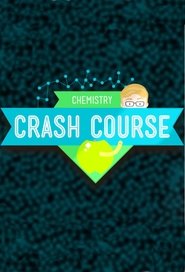Crash Course Organic Chemistry - Season 1 Episode 21 Substitution Reactions - SN1 and SN2 Mechanisms
We’ve already learned a bit about substitution reactions in organic chemistry and the two different paths they can follow: SN1 and SN2. In order to better predict the products of a substitution reaction and understand how they work, we need to be able to figure out which mechanism a reaction is likely to follow. In this episode of Crash Course Organic Chemistry, we’ll deepen our knowledge of substitution reactions by looking at factors like substrate structure and reaction conditions to determine whether SN1 or SN2 is the more likely mechanism.
Year: 2022
Genre: Documentary
Country:
Studio: YouTube
Director:
Cast: Deboki Chakravarti
Crew: John Green (Executive Producer), Hank Green (Executive Producer)
First Air Date: Apr 30, 2020
Last Air date: Apr 14, 2022
Season: 1 Season
Episode: 50 Episode
Runtime: 26 minutes
IMDb: 2.00/10 by 1.00 users
Popularity: 4.3792
Language: English
Keyword : chemistry
Season
Season 1
Episode
What Is Organic Chemistry?
The Basics of Organic Nomenclature
More Organic Nomenclature: Heteroatom Functional Groups
3D Structure and Bonding
IR Spectroscopy and Mass Spectrometry
Alkanes
Cyclohexanes
Stereochemistry
More Stereochemical Relationships
Polarity, Resonance, and Electron Pushing
Acidity
Nucleophiles and Electrophiles
Intro to Reaction Mechanisms
E/Z Alkenes, Electrophilic Addition, & Carbocations
Thermodynamics and Energy Diagrams
Alkene Addition Reactions
Alkene Redox Reactions
Alkyne Reactions & Tautomerization
Radical Reactions & Hammond's Postulate
Intro to Substitution Reactions
Substitution Reactions - SN1 and SN2 Mechanisms
E1 and E2 Reactions
Determining SN1, SN2, E1, and E2 Reactions
Alcohols, Ethers, and Epoxides
Synthesis and Column Chromatography
How to Identify Molecules - Proton NMR
An Overview of Aldehydes and Ketones
Organometallic Reagents and Carbanions
Aldehyde and Ketone Reactions - Hydrates, Acetals, & Imines
Carboxylic Acids
Carboxylic Acid Derivatives & Hydrolysis Reactions
Interconversion and Organometallics
Chemoselectivity and Protecting Groups
Retrosynthesis and Liquid-Liquid Extraction
Polymer Chemistry
Aromaticity, Hückel's Rule, and Chemical Equivalence in NMR
Intro to Electrophilic Aromatic Substitution
More EAS - Electron Donating and Withdrawing Groups
More EAS & Benzylic Reactions
Synthesis, Distillation, & Recrystallization
Conjugation & UV-Vis Spectroscopy
The Diels-Alder & Other Pericyclic Reactions
Enols and Enolates - Reactivity, Halogenation, and Alkylation
The Aldol and Claisen Reactions
Crossed Aldol Reactions, Enones, and Conjugate Addition
Amines
Diazonium Salts & Nucleophilic Aromatic Substitution
Biochemical Building Blocks & Fischer and Haworth Projections
Biological Polymers
Medicinal Chemistry and Penicillin Total Synthesis























